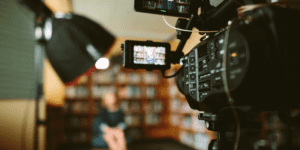Are you looking to build brand recognition and create a community around your brand? Are you trying to drive traffic and generate conversions? Then including social media in your marketing plan is a must!
Social media can help you connect directly with your ideal audience and provide them with useful and interesting content. In doing this, they’ll want to interact even more with your brand.
But how exactly do you optimize your efforts to increase website traffic through social media? Continue reading to find out!
Which Social Media Platforms Should You Use?
The major social networks which include Facebook, Instagram, Twitter, and LinkedIn are a great place to start when setting up social media accounts for your business.
Also consider the following platforms if their style and audience align with your brand:
- Pinterest: great for showcasing imagery and linking to helpful content such as “how-to guides”.
- Reddit:for showcasing industry knowledge and connecting with a highly engaged audience.
- Snapchat or TikTok: to show quick and more “on the fly” content such as behind the scenes and sneak peeks.
Don’t try to use every social media platform. You may not even need to use all four of the most popular platforms depending on your brand and goals. Choose only those that are the best fit for you.

Top Ways To Increase Traffic Through Social Media
For most brands, the ultimate goal of all digital marketing efforts is to drive website traffic in order to convert sales.
Therefore, driving traffic will most likely be one of your main desired results from using social media. Here are some easy ways to do just that!
1. Optimize your profile/bio
Your bio or profile is one of the first things people see when they visit your social media accounts. This includes Twitter and Instagram bios that appear at the top of the account and Facebook’s “About” section.
Just like with SEO, keywords as well as relevant hashtags are important to use in your bio. These help users find your page (which will then lead them to your website.)
The bio provides a little info about your company and importantly, has a link to your website. This link will direct people to your website for more info and also counts as a backlink!

2. Promote Blog Content And Create A Posting Schedule
Make sure to share blog posts whenever they’re posted. This will increase the number of people who become aware of the new post being live.
This in turn will increase the amount of traffic to your website.
The social performance of links shared on social (link clicks and shares of the post) will additionally contribute to your SEO performance.

Creating Content Calendars and Social Media Schedules
To ensure content is created and shared most effectively, develop a well-planned content calendar outlining the content you plan to produce then sync this with a social media posting schedule.
Planning content and social posts a month to two in advance is a good practice. You may even start earlier if creating content for major promotions you’ll be running.
You can do this using an online calendar, spreadsheet, or even a calendar print out. Alternatively, platforms like Hootsuite and Buffer can help with planning and scheduling posts for multiple platforms.
Chances are, no matter what industry you’re in, there will be people to connect with on Instagram. Learn more in our blog article Don’t Think Your Business Will Benefit From Instagram? Think Again
Re-sharing Content
If you have older content, you should also add this to your upcoming social media promotions if it’s still relevant and valuable.
Creating evergreen content (content that’s not time-specific, such as trending stories, and always stays relevant and interesting) means that you can re-share content over time.
This means you’ll have lots of content to share, that will bring you website traffic, without having to create new content all the time.
Remember that each post won’t reach your entire audience of followers (for Facebook, it’s estimated that only 2% of followers will see each post if paid promotion isn’t applied.) Therefore, re-posting can help increase the reach of the content you share.
When sharing a link again, analyze things like the post caption and image you used previously and edit. For example, you can change the caption, change the image, or post at a different time to increase reach, engagement, and website traffic.

3. Make Your Content Shareable
Getting followers to click-through to read your content is great but having them share it with their network as well is even better!
This will drastically increase your reach and should also increase your website traffic too.
Encourage content sharing by making sure all blog posts (and other content where possible) have a social sharing tool embedded.
A lot of sharing bars will include the number of shares next to each platform icon. If your content is well shared, this information can help in building trust with other visitors and ultimately lead to a higher conversion rate.
You can even install a “Click To Tweet” button next to quotes, stats/facts, or particularly interesting snippets.

4. Adjust Your Social Message For Each Platform
All platforms have different posting capabilities and effective ways to form social messages.
For example, Tweets work best when short and to the point and you’re only allowed 280 characters including those in the URL and hashtags.
Instagram however, highlights great imagery before text captions (captions won’t appear in the “discover” feed unless images are clicked on and even in the user’s feed of accounts they follow, only the first 3 lines of text show below the image with the rest showing only if they click to see more.)
Instagram also lacks in-caption linking capabilities so you need to effectively direct followers to your bio to find the website link (or a link to an Instagram content hosting platform like Linkin.bio.) You can also make use of Instagram stories with swipe-ups.’
The major social media platforms also have different image dimensions, so you’ll need to size all images appropriately before creating and scheduling your posts.
By creating posts with each platform in mind, you increase your chance of getting interaction with your post and ultimately link clicks.

5. Post When Your Audience Is Active
There are certain times when social platforms are the busiest. Start by posting at those times.
As your audience grows, you can use each platform’s analytics to see when your audience is most active.
You can then adjust posting times to coincide with those times. You can also use third-party tools to get more in-depth info.
Just from posting and assessing results too, you can see good times to share, in particular, good times to share certain types of content.
Blog posts may not get a lot of click-through on Monday mornings but a fun engagement post such as a meme may perform great. The blog post share may perform better around lunchtime or in the evening when followers have the time to click through and read.

6. Engage With Your Audience
Don’t forget that it’s called “social” media for a reason! Don’t just schedule posts and forget to interact with your followers.
Answer questions, gain feedback and improve the experience followers have with you.
For example, the comment that a follower posts could be one of their first interactions with your brand so make sure they feel valued and get all the info they need.
Engaging also gives another chance to drive followers to your site therefore increasing traffic. You can suggest a complementary post to read or lead people with questions to relevant pages on your site.

7. Prioritize Sharing Visual Content
Posts with a visual component perform around 40% better than those without.
Using visual elements makes it more likely that people will notice the post and click through on your link.
Ensure all or almost all posts have some type of visual element. This can include a relevant image, graph, infographic, animation, or video.

8. Optimize Calls-To-Action
It’s important to lead followers towards your desired action with a call-to-action in your social message/caption.
Include things like “Read more”, “Click here”, “Learn more here”, or “Visit our site” to persuade followers to click through to the content on your site to increase social referral traffic.
CTAs can increase link clicks by over 250%! Test out different CTAs at different times and see which perform best and prioritize those for future posts.

9. Try Paid Social Advertising
If you are new to using social media platforms, organic (non-paid) posts may be effective enough to gain desired reach and meet your social media goals.
However, if you want to give the reach, engagement, and CTR of your posts a boost or try something other than feed posts (such as Facebook ads), paid promotions could be a good option.
You don’t even need to invest a large percent of your marketing budget to test out social advertising with the average cost-per-click (CPC) for a Facebook campaign being $0.45 to $0.70.
Looking for a way to connect without cold calling? Learn how social selling can help you grow your business.
Most social media platforms allow for paid promotion of posts (referred to as boosted posts or dark posts). This allows you to promote an organic post to reach more of your target audience.
You can target followers of your page or non-followers who meet certain criteria. This can include being in a certain location, being a certain age or gender, and/or having certain interests.
For Facebook and Instagram campaigns, you can install a pixel on your website and re-target those who have completed certain actions on your site, for example, those who have visited a certain product page in the last 30 days. These paid posts will appear like organic posts in your targeted users’ feeds or stories.
You can also invest in social media advertising such as Facebook ads. Unlike promoted posts, these appear more like a Google ad, allowing for a more ad style image (although the less text the better) with a short caption explaining your offer and a CTA.

Checking If Your Strategy Is Working
Once you have a strategy to increase traffic through social media, make sure you’re frequently checking results and adjusting strategy as needed.
Some things to consider include:
Changes in Activity on Posts
With changes to posting strategy, are you seeing increases or decreases in certain activities?
This could include posts getting more or fewer clicks, shares/retweets, comments, or reactions such as likes.
Less and Less Interest in Your Content
With so much content to compete with, if what you’re posting isn’t valuable, unique, or interesting, then people may just start ignoring it.
If you see your social referral traffic decrease, this could be the problem and you may need to plan a content revamp.
In Conclusion
With these tips and tricks, you should see your social referral traffic increase rapidly.
If you would like to try out social media marketing but don’t have the time or need some more advice, Brand Hause can help!
We offer highly effective social media marketing services, to help you take your social media presence and results the next level. Interested? Get in touch today for a free consultation!

Social media is more than just getting followers. If you aren’t sure what your goals are or you don’t know where to start, we can help!






